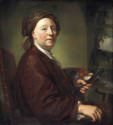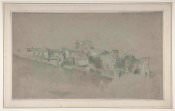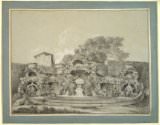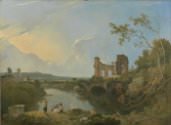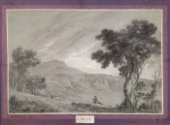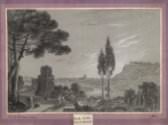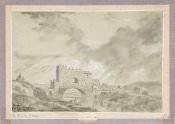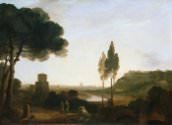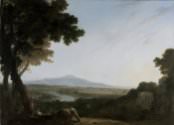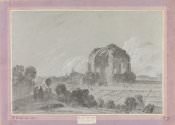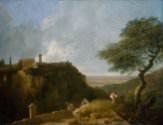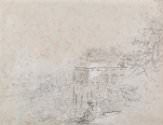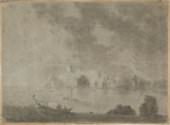Richard Wilson
Richard Wilson
Richard Wilson was born in 1714, in the village of Penegoes, Montgomeryshire, where his father, the Reverend John Wilson, served as rector. Wilson, whose family was connected to members of the leading Welsh gentry, received an excellent education, and was from his youth well versed in the classics. In 1730 he was apprenticed for six years to the artist and art dealer Thomas Wright, who ran a studio in Covent Garden in London. By the age of twenty-four, Wilson had established an independent portrait practice in London, and was also painting occasional landscapes.
In March 1750, Wilson traveled to Italy, and was in Venice by the end of that year. There he was encouraged to paint landscapes by the Italian artist Francesco Zuccarelli, whose portrait he also painted at the time. Toward the end of 1751, Wilson traveled from Venice to Rome. Encouraged by the French artist Claude-Joseph Vernet, Wilson concentrated on painting landscapes set in Rome and its environs, including Tivoli, Lake Albano, and Lake Nemi. In particular, he created numerous presentation drawings for visiting Grand Tourists, notably the Earl of Dartmouth, and also made several visits to the countryside and coastline near Naples. Among the most important works produced at this time was the first version of The Destruction of the Children of Niobe, to which new figures were subsequently added.
On his return to England, by autumn 1757, Wilson set up his studio in the Great Piazza, Covent Garden, where he attracted talented pupils and apprentices, notably William Hodges and Thomas Jones. By the early 1760s, Wilson, who became a leading member of the newly-fledged Society of Artists, was regarded as the leading British landscape painter, through the exhibition of a series of classical landscapes, including a second version of The Destruction of the Children of Niobe (Yale Center for British Art), Phaeton’s petition to Apollo (private collection) and Ceyx and Alcyone (National Museum Wales, Cardiff). The popularity of these works was ensured through their replication in oils as well as in the form of engravings that were first made by William Woollett and published by John Boydell. Wilson widened his repertoire to include views of his native Wales—notably Llyn Cau, Cader Idris, and Snowdon from Llyn Nanttle, which were infused with the spirit of Italy and classical landscape painting.
In 1768, Wilson became a founding member of the Royal Academy, but although he continued to exhibit there over the next decade, his health deteriorated rapidly, a decline exacerbated by alcohol. In 1776, Wilson was appointed Librarian to the Royal Academy, probably in order to provide him with an income, as by then he was living in poverty, compelled to sell oil sketches for small sums and exhibiting pictures made many years earlier. Wilson retired to Wales in 1781 to live with a cousin at Colomendy Hall, Denbighshire. He died on May 11, 1782.
